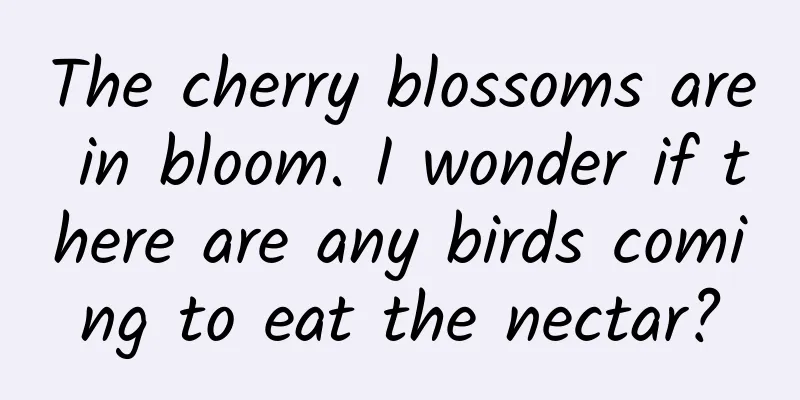The most terrifying head-patting curse: If I touch your head, you will give me your child to eat.

|
👇This article contains pictures of ants and spiders👇 Ant and spider fear friends please be careful on the slippery ground An ant nest hanging from a treetop in Queensland, Australia, has had an unexpected visitor - a small, brightly coloured jumping spider. The jumping spider walked straight to a small worker ant holding an ant larva, raised its two front legs, and touched the worker ant's head and antennae. The worker ant put the larva down, and the spider picked it up and began to...enjoy its meal. What kind of poison did the jumping spider put on the ant that made the ant hand over the larva? Yellow ants and jumping spiders Cosmophasis bitaeniata | Samuel John / Peckhamia (2020) The criminal who broke into the ant nest The victim of this strange infanticide case was the yellow ant (Oecophylla smaragdina). The reason why it is strange is not only because the ants "obediently" handed over the larvae, but also because of the characteristics of the yellow ant itself. This is a very ferocious ant with sharp jaws and formic acid, and all kinds of small animals stay away from it. As early as the Jin Dynasty, the Chinese used yellow ants to kill pests. However, the spider blatantly snatched the larva without provoking a counterattack from the ants. It must have used some means to deceive the ants. The yellow ant's large jaws can be used to intimidate others. | Christian Gloor / Wikimedia Commons The jumping spider that snatched the ants is Cosmophasis bitaeniata, and its body length is only about 6 mm. But it has a very domineering English common name "green ant hunter", which literally means "green ant hunter". How does the tiny jumping spider hunt yellow ants? The secret may be smell. Research analysis shows that 14 hydrocarbons in the spider's skin can be found in the ant's skin. In other words, the jumping spider's smell imitates that of ants, which may be the secret of its ability to blend into ant nests. The researchers used two odors to test the yellow ants: one was the extracted smell of jumping spiders, and the other was the smell of yellow ants from other ant nests. The results showed that the yellow ants were more sensitive to the smell of "foreign ants" and were more likely to attack angrily; on the contrary, they were more receptive to the smell of jumping spiders. "Green Ant Hunter" C. bitaeniata | Obsidian Soul / Wikipedia Why can't ants, whose sense of smell is enough to distinguish between ants from different ant nests, recognize jumping spiders? Scientists have no clear explanation for this, and can only make some guesses. Perhaps the ants whose scent is extracted emit pheromones that represent "alarm", which makes the ants that smell the scent become alert. Perhaps the jumping spiders are not imitating the large worker ants responsible for attacking, but the small worker ants or larvae that are babysitting in the nest, and the ants do not regard them as enemies. Perhaps the ants will judge whether the other party is from the same nest as themselves based on the smell outside the epidermis (such as glandular secretions)... The cunning jumping spider C. bitaeniata | Graham Winterflood / Wikipedia There is another possibility: perhaps the jumping spider's scent is not accurate to a particular ant nest, and it can only roughly mimic the species of the yellow ant. The standard by which the yellow ant determines whether the other party is a friend or foe is the "smell of foreign ants". The more obvious the characteristics are, the more likely they are to attract attention. In "Ninja Rantaro", the ninja who is good at disguising himself and blending into the enemy has an extremely featureless face. In short, based on the information the ants smelled, jumping spiders do not have the characteristics of "foreign ants". As for how the jumping spider "convinced" the yellow ant to let go of its larvae, unfortunately, we still don't know. There are still too many unsolved mysteries about spiders. For example, the Attacobius attarum of the family Cynomorium, they will ride on ants and enter the nest of the six-spined leaf-cutter ant (Atta sexdens) to steal larvae. But how it can hide from the world, no one can give an answer. Jumping Spider Some jumping spiders eat ants, while others use ants to bully others. However, their deception is much milder, infringing only on the ants' "image rights." Although ants are small, they are well-armed and very united, making them a very difficult target for predators. Therefore, some spiders will pretend to be ants to scare predators, which is a fairly common phenomenon. The body of the arachnid class is divided into two parts: the cephalothorax and the abdomen. Some spiders that mimic ants will become thinner in the middle of the cephalothorax or abdomen, pretending to be divided into three parts like insects. The spider Pranburia mahannopi is ingenious. It has long bristles on its first pair of legs. When it is frightened, its two front legs are raised together to form a ball of hair, just like the head of an ant. A jumping spider called Myrmarachne bakeri can change its body color to mimic different species of ants - the genus name of this jumping spider is even called Myrmachne, which explains its camouflage specialty. Other spiders will imitate the walking path of ants, imitate the posture of ants pouncing on prey, or lift a pair of legs to pretend to be ant antennae. These are not ants, but jumping spiders from the genus Myrmecophaga | Yoshiaki Hashimoto et al. / Scientific Reports (2020) Another member of the genus Myrmecophaga, M. melanotarsa, doesn't stop at just bluffing, and even pretends to be an ant to scare other spiders. This tiny black jumping spider lives among the nests of other jumping spiders (jumping spiders don't weave webs, but instead build nests out of silk threads and things like leaves). Ants can't usually walk on spider silk, but spiders can. M. melanotarsa can approach the nests of other jumping spiders that are guarding their eggs, tricking them into thinking they're being attacked by ants, and causing them to abandon their nests and flee. Then, M. melanotarsa can eat the eggs and the newly hatched jumping spiders in the nest. M. melanotarsa eating another species of jumping spider | Robert R. Jackson et al. / New Zealand Journal of Zoology (2008) Pretending to be powerful and intimidating predators is called Batesian mimicry; pretending to be powerful and waiting for an opportunity to attack other creatures is called aggressive mimicry. M. melanotarsa pretends to be an ant, which not only scares predators, but also allows it to steal jumping spider eggs, so it has both Batesian mimicry and aggressive mimicry. The Wall Thief In the relationship between ants and spiders, there is also the event of "putting down the butcher knife and becoming a Buddha on the spot". The protagonist of the story is a jumping spider with a cool name, Bagheera kiplingi. Its species name comes from the novelist Joseph Rudyard Kipling, and its genus name comes from Bagheera, the black panther in Kipling's children's novel The Jungle Book. Bagheera is a thief in the ant kingdom, and its uniqueness lies in that it is a vegetarian thief. Bagheera jumping spider | Maximilian Paradiz / Wikimedia Commons Some trees of the genus Vachellia have small particles of protein and sugar on the tips of their leaves, called Beltian bodies, which are a favorite food of Bagheera jumping spiders. Bagheera jumping spiders living in Mexico eat Beltian bodies as much as 90% of their diet, and they also drink nectar secreted from acacia branches. However, acacia produces bainites and nectar in order to hire "bodyguards" - ants of the genus Pseudomyrmex. These ants will attack various animals that eat acacias and bite off plants that approach acacias. In return, acacias provide them with a rich meal. In the eyes of ants, the Bagheera jumping spiders that eat and drink acacias are thieves who steal their legitimate rewards. Moreover, jumping spiders occasionally steal ant larvae, which is even more hateful. Ant picking bainite from a leaf tip | Judy Gallagher / Wikimedia Commons However, these thieves are quite afraid of the "real owner". When the Bagheera jumping spider is eating, if it finds an ant approaching, it will immediately use its jumping ability to move away, just like Chu Liuxiang, to become a high-flying thief. The world of jumping spiders and ants is also a world of its own. References [1] Allan RA, Elgar M A. Exploitation of the green tree ant, Oecophylla smaragdina, by the salticid spider Cosmophasis bitaeniata[J]. Australian Journal of Zoology, 2001, 49(2): 129-137. [2] Allan RA, Capon RJ, Brown WV, et al. Mimicry of host cuticular hydrocarbons by salticid spider Cosmophasis bitaeniata that preys on larvae of tree ants Oecophylla smaragdina[J]. Journal of Chemical Ecology, 2002, 28(4): 835-848. [3] Cushing P E. Spider-ant associations: an updated review of myrmecomorphy, myrmecophily, and myrmecophagy in spiders[J]. Psyche, 2012, 2012. [4] Nelson XJ, Jackson R R. Aggressive use of Batesian mimicry by an ant-like jumping spider[J]. Biology letters, 2009, 5(6): 755-757. [5] Meehan CJ, Olson EJ, Reudink MW, et al. Herbivory in a spider through exploitation of an ant–plant mutualism[J]. Current biology, 2009, 19(19): R892-R893. Author: Little Wombat Editor: pee pee shrimp, maimai Title image source: Lucas the Spider This article comes from the Species Calendar, welcome to forward If you need to reprint, please contact [email protected] |
<<: Why do our fingers or toes get wrinkled after being in water for a while?
>>: Food Safety | Are you drinking coffee correctly? Here is the correct way to open it
Recommend
Wuhan Three Towns Tea Tasting Farm Drinking Tea Sn Red Square Recommended
Wuhan Tea Red Square recommends 132-7243-3196. Th...
With 160 million monthly active users, how should Meipai develop into a platform?
Meitu Inc. recently announced its full-year resul...
Several methods to implement delayed operation in Android development
Using Handler and Runnable The Handler class can ...
The new version of App Store may have a severe blow to the ranking business, but there is still hope
On September 20, Apple officially pushed the iOS ...
Small flaws in iOS native image tagging that you may not have noticed
As we use smartphones for longer periods of time ...
How to obtain information sources for bidding promotion?
We all know that all revenue-generating categorie...
Starting at RMB 170,000, Lynk & Co 07 EM-P challenges the Haibao DM-i, but the worst hit are the Accord and Camry
How competitive is the current car market? In the...
WeChat update! You can finally block group chats
Hello my friends. I just had a day off yesterday ...
Have you heard of "molecular cuisine"? Maybe you have already tried it!
Review expert: Meng Meng, associate researcher at...
Revision of the Science Popularization Law: Providing legal protection for science popularization information workers and promoting the development of science popularization
On December 25, 2024, the 13th session of the Sta...
What should operators do before, during and after an online event?
Today, taking online activities as an example, le...
Analysis of Xiaohongshu and Mogujie's competitive products
Xiaohongshu , Mogujie and What’s Worth Buying are...
What's in a bird's nest? Much more than twigs and straw...
What are bird nests usually made of? Twigs and st...
After its head was chopped off, this chicken lived for another 2 years!
In April 1945, during the fierce battle as the Un...
up to date! Reference data of 39 information flow platforms!!
The November data of major information flow platf...









